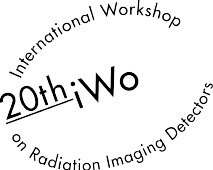Speaker
Description
There is an increasing research interest in combining X-ray spectroscopy with imaging. The availability of full-field energy resolving detectors is enabling the use of true spectroscopic X-ray imaging techniques at small-scale X-ray microscopy facilities, such as the Ghent University Centre for X-ray Tomography (UGCT). At UGCT we operate the SLcam [1], a full-field hyperspectral camera prototype. This system uses a 450 µm thick silicon CCD sensor with 264 by 264 pixels measuring 48² µm². The camera operates in photon counting mode where incident X-rays generate deposited energy-dependent charge clusters spread over one or more pixels. These charges are amplified, digitized, and recombined into photon events with an associated energy and “centre-of-mass” location, resulting in a developer specified energy resolution of 152 eV or better at the manganese Kα line.
We present an optimized software chain for camera control and image processing. Given the SLcam’s original low-flux applications, working in the higher flux environments of transmission imaging poses significant challenges. To this end the processing chain takes advantage of improved calibration and characterization of the SLcam. By quantifying and analysing a large number of photon events of different energies and origins, detector performance is significantly improved for our workloads, and the energy resolution further refined. This work was performed on data from radioactive sources, X-ray tube spectra using different target materials, and data from a recent beamtime at I13-2 [2], Diamond Light Source, Didcot, UK. The latter has allowed to discriminate double-counted photons against real photons at very similar energies, as the harmonic of the used monochromator is slightly below two times the fundamental energy, as shown in Fig. 1.
